A surprisingly large proportion of the oldest New England houses still in existence were built by our ancestors.
| Stephen HOPKINS House | Plimoth Plantation | c.1627 | Re- creation . |
The 17th-Century English Village is a re-creation of the small farming and maritime community built by the Pilgrims* along the shore of Plymouth Harbor. In the Village, the year is 1627, just seven years after the arrival of the Mayflower. The Museum selected this year for re-creation because it is well-documented in the historical sources and shows the plantation (a word that was used interchangeably with the word “colony” in the 1600s) just before the colonists began to disperse beyond the walled town and into other parts of what would become southeastern Massachusetts.
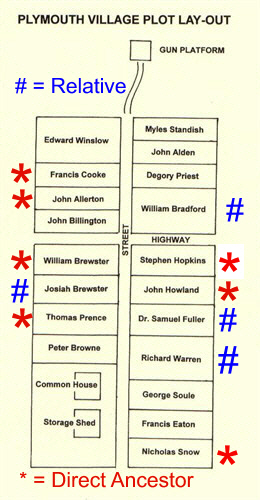
Our ancestors or their close relatives had almost half the lots in early Plymouth – (George Soule was the grandfather of John TOMSON’s son-in-law, not close enough to get a #)
| 1. Fairbanks House | Dedham, Mass | c.1637 | Oldest wood-frame house in America, dated using dendochronology, and the oldest house in Massachusetts. |
Jonathan FAIRBANKS (1594 – 1668) (wikipedia) was an American colonist who in 1637 built the Fairbanks House in Dedham, Massachusetts which is today the oldest surviving wood framed house in North America. Through Mary and Susan, he was Alex’s 9th Great Grandfather twice, two of 1,024 in this generation of the Shaw line.
The Fairbanks family remained in Boston about three years, before settling in Dedham, as one of the earliest settler families. Jonathan Fairbanks signed the Covenant when the town was founded and named.
Fairbanks House
The house was built in several stages; the center portion of the present house is oldest, with a gable-roofed portion at the center. It was once a lobby-entry, hall-parlor house of two stories with a center chimney bay. The lean-to was added later, contrary to the note on the first floor plan (see image). The oak lintel over its parlor fireplace has been dated by dendrochronology to 1637. Since timber was not seasoned before use in the 17th century, this provides a plausible date for the house’s initial construction. Other houses claiming to be older have yet to be scientifically dated
Exterior walls were covered with wide oak clapboards at the front, narrower oak on the west gable end, and narrow cedar on the rear. Its front door was originally located to the west side of the chimney-bay, while the rear door is still located at the west end of the north wall. Original front windows included wide banks on each floor and small windows lighting the chimney bay. A well-preserved four-light window survives in the east gable end, but the north and east ends of the house apparently had no windows.
A lean-to was later added at the back of the house and, perhaps in 1641, a wing on the east side. The west wing was added around 1654. The east wing was probably added circa late 1700s, assembled from two earlier buildings elsewhere. A chimney was then built for it; later its roof rafters were raised and reused in a new gambrel roof. The next major change was the expansion of the parlor to the east, under a hip roof, and the addition of the small entry to this expanded space, probably around 1800. A new wing was added to the west side of the house, including two rooms. The last addition to the house, completed by 1881, was a privy added behind the west wing.
It has been claimed that this house was built in 1636. This claim has been the subject of considerable discussion among historians, and is disputed on historical grounds. One, at least, expresses the belief that it was not built until about the year 1640. The chief reason assigned for his belief is that the old house is a framed building of massive oak timber, and that there is no historical evidence that any framed dwelling houses were erected in the town as early as 1636. Against this alleged fact is the tradition that the frame of the main part of the house, together with the bricks and tiles and windows, was imported from England, and remained in Boston for several months before it was carried to Dedham.
The truth is that the house was not built as it stands at one time, or in one year; and it is certain that Jonathan owned a house situated probably on the same lot in 1648. Subsequently, perhaps as late as 1654, a large addition was made to the original building, which was called the new house, which is said to have been built for the occupation of his son John after his marriage.
The house was occupied by Fairbanks descendant and passed down to succeeding generations of the family until the early twentieth century. In all, eight generations of the Fairbanks Family lived in the house and the Fairbanks family still owns the property. Over the years, the original portion was extended with additions as the family’s needs and as the fashions of the times dictated including the east and west wings added in the early nineteenth century.
| 2. Rev Henry Whitfield House | Guildford, CT | 1639 | Oldest Stone House in New England |
Rev. Henry Whitfield (1597 – 1657) was the father of Rev. James FITCH‘s first wife Abigail. While he is not one of our direct ancestors, I thought his story would be interesting to include. Guilford is considered by some to have the third largest collection of historic homes in New England, with important buildings from the 17th, 18th, and 19th centuries There are five historic house museums, including the Henry Whitfield House (1639), the oldest dwelling house in Connecticut and the oldest stone house in North America. If this house was actually begun in 1639, it would be the oldest extant New England Colonial building, but there is no original interior wood, so the tree-ring method of dating (dendrochronology) cannot be used. According to tradition, the stone of which it is built was brought by Indians on hand-barrows across a swamp from Griswold’s lodge, about eighty rods distant. The walls are three feet thick. The house was kept in its original form till 1868, when it underwent considerable renovation.
The Henry Whitfield House is a historic house located at 248 Old Whitfield Street in Guilford, Connecticut. This house dates from 1639, having been built just before the town of Guilford was settled. The house, with its massive stone walls, also served as a fort. It was one of four stone houses that served to protect the community. Henry Whitfield was a Puritan minister who had come from England to flee religious persecution.
The house was remodeled in 1868 and opened to the public in 1899 as a museum of the State of Connecticut, the Henry Whitfield State Museum. The house was restored in 1902-04 and in the 1930s and was declared a National Historic Landmark in 1997. It is the oldest house in Connecticut and the oldest stone house in New England. It was named a State Archeological Preserve in 2006.
| 3. Richard Sparrow House |  |
Plymouth, Massachusetts | 1640 | Oldest house in Plymouth. |
Richard SPARROW was born in 1605 in Kent England. He was married to Pandora BANGS in 1629. He immigrated in 1632 from England. Richard died on Jan 8 1660/61 in Eastham, Barnstable, Mass. Burial in Cove Burying Ground. Our ancestor Capt. Jonathan SPARROW was his only child.
| 4. Wing Fort House | East Sandwich, Massachusetts | 1641 |
John WINGE was baptized on 1 Sep 1611 at Strood, Kent, England . His parents were Rev. John WINGE and Deborah BACHILER. In 1632, shortly after the death of his father, he emigrated from England to New England with his three brothers, his mother, her father, Stephen Bachiler and her mother Helena Mason Bachiler. They came to New England on the ship William & Francis with her father and his wife. He married Elizabeth DILLINGHAM at Sandwich, Plymouth Colony, around 1645. After Elizabeth died, he married Miriam Deane on 31 Jan 1692/93 . John’s will is dated 13 Apr 1696 and he died at Harwich, Barnstable, MA, around Apr 1699.
In 1637, ten influential citizens from Saugus had petitioned the General Court of Plymouth Colony to found a new settlement on Cape Cod. Whether their decision to settle in that area was influenced by Rev. Stephen Bachiler’s attempt to found a settlement at Mattacheese (now Yarmouth) is not known. It is known that The Wings were among the “three score” [about 60] families who moved to the new settlement shortly after it was granted. Even at this early date, Massachusetts Bay Colony was fast outstripping the older Plymouth Colony, both in population and political clout. The Bay colony could well afford to lose some colonist to its neighbor, and the relationship between the two colonies were always amicable. It is unknown how it was decided to name the new settlement Sandwich, Mass. It was clearly named after the city of Sandwich in Kent County, England as it bears some physical resemblance to the old Cinque Port city. The Wings were the only family in the new town who are known to have lived in its namesake town in England.
When Sandwich was first settled, John was the only Wing brother to be of legal age. Given the fact he (and not mother Deborah) was credited as selling their home in Lynn to William Tilton, it is likely the original homestead was likewise granted to him. When he moved to Yarmouth about 10 years later, the property probably reverted back to the Town of Sandwich. It is believed by many that the house they lived in was called The Orchard House. In Jun 1640 his brother Daniel purchased the homestead of Andrew Hallett and moved there. His brother Stephen was granted (or purchased) the “Fort House” on Spring Hill circa 1645.
Wing Fort House is a historic house at Spring Hill Road in East Sandwich, Massachusetts.
The house was built in 1641 and added to the National Register of Historic Places in 1976.
The Wing Fort House is recognized as the oldest home in New England continuously owned by the same family. John Wing’s brother Stephen either purchased the homestead from the town of Sandwich, or the town granted him the property, around the time of his first marriage in 1646. His descendants continued to live in the home until 1942, when the last resident (Miss Cora M. Wing) sold the home to the Wing Family of America, Inc.
Tradition states the home was at one time a fort to protect the earliest settlers from the Native Americans. The exterior of the “Old Fort” Room (which is the oldest part of the current structure) is composed of a double wall, which may have been filled in at one time. As the Cape Indians were found to be friendly, the town did not need any fort for protection.
The Fort House is now a museum, privately operated by the Wing Family of America, Inc. It is located at 69 Spring Hill Road (off of Route 6a), East Sandwich, Massachusetts. The museum is open Tuesday through Saturday from June 15 to September 30 from 10:00 a.m. to 4:00 p.m. and by appointment during the remainder of the year.
| 5. Sturgis Library | Barnstable, Mass | 1644 | One of John Lothrop’s original homes and meeting houses, and is now also the oldest building housing a public library in America. |
Rev. John LATHROP (1584 – 1653) was an English Anglican clergyman, who became a Congregationalist minister and emigrant to New England. He was the founder of Barnstable, Massachusetts. John was Alex’s 10th Great Grandfather; one of 2,048 in this generation in the Shaw line through his son Barnabas. He was also Alex’s 9th Great Grandfather; one of 1,024 in this generation of the Miller line through his son Samuel.
Lothrop began construction on a larger sturdier meeting house by Coggin’s (or Cooper’s) Pond, which was completed in 1644. This building, now part of the Sturgis Library in Barnstable, Massachusetts is one of John Lothrop’s original homes and meeting houses, and is now also the oldest building housing a public library in America. Since Reverend Lothrop used the front room of the house for public worship, the library is also the oldest structure still standing in America where religious services were regularly held. This room, now called “The Lothrop Room,” with its beamed ceiling and pumpkin-colored wide-board floors, retains the quintessential early character of authentic Cape Cod houses.
- xx

Rev. John Lothropp’s bible brought to America by Rev. John Lothropp onboard the Griffin in 1634. Rev. John Lothropp was a religious leader in Plymouth Plantation where he founded three churches which are still in existence.
| 6. Dillingham House B&B | 1650 | Generally viewed as being haunted. |
Edward DILLINGHAM was baptized on 6 Dec 1595 at Cotesbach, Leicester, England. He married Ursula CARTER at Cotesbach, Leicester, England, on 14 Feb 1614/15. Edward’s younger brother John immigrated in 1630. Edward with his wife, Ursula, and three of their children came to Boston in 1632, settled in Lynn, and later in Sandwich, Massachusetts. Three daughters of Edward and Ursula remained in England Edward died between 1 May 1666 when he wrote his will and 5 June 1667 when it was proven in Sandwich, Plymouth Colony.
In 1637 Edward Dillingham with a land grant from Myles Standish was one of the founding fathers of the town of Sandwich. It is believed that Edward’s son, Simeon, built the Dillingham House in 1650. For the next 270 years the house was occupied by Dillinghams.
The Dillingham House is located on Old Main Street, very close to the village of Sandwich and its many attractions, including beaches, museums and the scenic historic village. Convenient to many places and centrally located, Sandwich, Massachusetts is the perfect base from which to visit Cape Cod, the Islands, Newport, Plymouth or Boston.
Ryan Griffin now owns the Dillingham House and operates a four bedroom B & B there. The house has gone from being the home of one of the distinguished founders of Sandwich, MA, Edward Dillingham to being a rundown boarding house during the 1930s and 40s and then was vacant for much of the 1970s. It is now once again restored to a lovely house for guests to Cape Cod. Throughout all these incarnations, however, it has been generally viewed as being haunted. Many people think the ghost is Branch Dillingham who committed suicide in 1813. Others think it is several of his many children, or both. During the 1970s the local police responded many times to alarms from the house, only to find no cause. during their investigations doors that would not budge would suddenly open easily and lights that did not work would be on upon their return to that room. The police reports noted that over the years activity seemed to increase in October. Ms Griffin has also noticed this pattern. One guest briefly saw a man in Victorian clothing, and her sister claimed that when she woke up she saw a young girl sitting at the end of the bed. Other guests have reported unexplained footsteps when no one is around. The Dillingham House is at 71 Main St., Sandwich MA 508-833-0065. email info@dillinghamhouse.com
| 7. Macy-Colby House |  |
Amesbury, Massachusetts | 1654 |
Anthony COLBY was born 8 Sep 1605 in Horbling, Lincolnshire, England. His parents were Thomas COLBY and Anna JACKSON. Some claim he was the son of Thomas and Beatrice (Fenton) Colby and therefore connected to English royalty. This has not been proved. He arrived in America on the Arabella in 1630 with the Winthrop Fleet. He married Susanna WATERMAN 1632 in Boston, Mass. Anthony died 11 Feb 1661 in Salisbury, Essex, Mass.
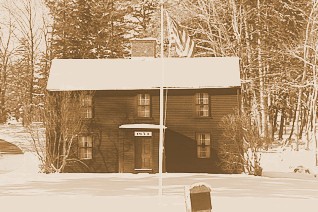
259 Main Street, Amesbury, MA The Macy-Colby house is open on Saturdays from 10:00 am to 4:00 pm during the summer. Other times are available by appointment. To arrange an appointment contact: Kathy Colby 978-388-3054 colbykathleen@verizon.net
x

Hearth of the Colby House from an old postcard “Macy Colby House Fireplace, Amesbury, Massachusetts”
The year after Anthony Colby’s death, his widow, Susannah sold 60 acres near Haverhill, MA to her son Isaac to pay for her board. From the public divisions she received land in 1662 and 1664. In the latter year she married William Whitridge, a carpenter from Gloucester, and he died in 1669. In the meantime, Susannah had to defend her homestead against the claim of Thomas Macy from whom it had been purchased. At about the time of the sale, Macy had fled to Nantucket to escape the penalty of sheltering two Quakers during a thunderstorm, but later he denied the sale and tried to expel the widow and her family by legal process. He was unsuccessful and the premises were in the possession of Susannah’s descendants as late as 1895. In 1678, the son of Thomas Macy was deeded half of all the lands remaining in consideration of services rendered to the widow, and in 1682 the homestead was deeded to Susannah’s son, Samuel Colby, who cared for her during the infirmities of old age.
| 7a. John Proctor House | Peabody, Mass | Bef. 1656 | Owned by two separate ancestors’ sons |
Emanuel Downing [son of our ancestor George DOWNING] returned to England in 1656 and leased his farm, in Peabody near Salem, to John Proctor(famous witch trial victim and son of our ancestor John PROCTOR) who ran a tavern out of the same house in Peabody MA . (348 Lowell St. Peabody, Mass..) as had Mr. Downing.
John Proctor, an early opponent of the witch hunt, lived in this house in 1692. One of the afflicted girls, Mary Warren, was a maidservant in his household. Proctor had cured her fits with a good whipping and maintained that the others could be cured with similar treatment. The stream which runs behind the house is known to this day as Proctor Brook. The Proctor house is privately owned.
The grant for this farm was originally given to Robert Cole in 1635 by the selectmen of Salem. He sold it to Emanuel Downing in 1638. In 1700 Charles Downing, the son of Sir George, sold the farm to Thorndike Proctor. He was the son of the murdered John Proctor. It remained in the Proctor family until 1851.
Then for years it was known as the Roome farm. The Downing/Proctor house still stands at 348 Lowell St. in Peabody. The Saccone family occupied the Downing/Procter house/tavern for twenty years and found early 1700 clay earthenware in the attic.
Vincent and Marion Raponi, who bought the house from the Saccone’s, have owned the property for some twenty-odd years now and report having found two British coins dating back to 1740 and 1755. When they started remodeling the house they found three fireplaces and the original wall and ceiling beams which were held in place by wooden pegs.
| 8. Philip Call House | Ipswich, Mass | 1659 | Notes |
Phillip CALL was born in 1627, in Faversham, Hernhill, Kent, England. His uncle Thomas CALL. arrived in America with his aunt and uncle in 1637 on “Hercules” and first lived in Charlestown, Mass near the ferry in Charlestown, on the Mystic side. Philip’s arrival is not known, though he may have moved to Malden in 1649 when he was 22 years old. He married Mary SMITH 1659 in Ipswich, Essex, Mass. Philip died in 1662 in Ipswich, Mass.
Philip was a tilemaker, a baker or a cordwainer.
This important First Period house was built by cordwainer Philip Call about 1659. The evolution of this property to its current twelve rooms is an outstanding example of careful adaption of various periods over four generations. Appearing as an old Victorian when purchased by the current owners in 1967, its careful restoration uncovered such important elements as an outstanding chamfered 17th century summer beam, that defines the original 2 112 story house, first enlarged around 1725. Restoration also discovered 17th century field paneling behind new walls, and one of the last remaining three hole privies in Ipswich. The contemporary kitchen overlooks a formal boxwood garden.
The town of Ipswich has more existing 17th C houses than any other, including Philip Call’s. Philip Call owned a house on this lot in 1659, and, by the deed of Woodam to Brown of the adjoining lot, in 1663, he was still in possession. Brown’s deed of the abutting lot to Paine, gives the owner of this lot as Philip Call’s widow, Mary, then the wife of Henry Bennet. Nathaniel Lord sold this lot to his son-in-law, Joseph Bolles, March 29, 1710. Bolles also bought of Joseph Fowler, owner of the abutting lot, a house and an acre of land, March 5, 1722. Charles Bolles sold his grandson, John Manning 3d, surgeon, an acre and house, bounded by Nathaniel Lord east, and Capt. Ebenezer Lord west, the estate of his deceased father, Jan. 16, 1786. Dr. Manning sold the western part of the lot with ahouse,that he probably built, to Daniel Lord 3d, April 23, 1798, and the heirs of Lord sold to Abraham Caldwell, whose heirs still own the property. Dr. Manning sold the eastern part and house to Ammi R. Smith, April 25, 1798. Smith bought a small pieceof Nathaniel Lord 3d on the east of his lot, Dec. 9, 1820 (225: 219). Abby H. Smith, the executor of Samuel R. Smith sold this estate to John G. Caldwell, being the same conveyed to him by Zenas Cushing in 1850, July 25, 1876 (958: 194). The Caldwell heirs still owned in 1905.
Ipswich in the Massachusetts Bay Colony … By Thomas Franklin Waters, Sarah Goodhue, John Wise, Ipswich Historical Society 1927
Philip Call owned a house on this lot in 1659, and, by the deed of Woodam to Brown of the adjoining lot, in 1663, he was still in possession. Brown’s deed of the abutting lot to Paine, gives the owner of this lot as Philip Call’s widow, Mary, then the wife of Henry Bennet. Nathaniel Lord sold this lot to his son-in-law, Joseph Bolles, March 29,1710 (26:176). Bolles also bought of Joseph Fowler, owner of the abutting lot, a house and an acre of land, March 5,1722 (42: 79). Charles Bolles sold his grandson, John Manning 3d, surgeon, an acre and house, bounded by Nathaniel Lord east, and Capt. Ebenezer Lord west, the estate of his deceased father, Jan. 16, 1786 (161: 55). Dr. Manning sold the western part of the lot with a house,that he probably built, to Daniel Lord 3d, April 23,1798 (163: 117), and the heirs of Lord sold to Abraham Caldwell, whose heirs still own the property. Dr. Manning sold the eastern part and house to Ammi R. Smith, April 25, 1798 (163: 117). Smith bought a small pieceof Nathaniel Lord 3d on the east of his lot, Dec. 9, 1820 (225: 219). Abby H. Smith, the executor of Samuel R. Smith sold this estate to John G. Caldwell, being the same conveyed to him by Zenas Cushing in 1850, July 25, 1876 (958: 194). The Caldwell heirs still own.
| 9. Edward Harraden House | Gloucester, Mass | 1660 | Added to the National Register of Historic Places in 1990. |
Edward HARRADEN was born about 1624 in Edburton, Sussex, England A few sources state that Edward’s father died in Salem, Mass. in 1630, but I can’t find evidence to support this assertion. Edward married Sarah [__?__]. He came to America from either Petworth parish, Storrington parish, or Edburton Parish, all in Sussex, England. He was one of the first residents of Annisquam, a small waterfront neighborhood located in the City of Gloucester located on the North Shore of Massachusetts. Edward died on 17 May 1683 in Gloucester, Mass.
| 10. Jabez Howland House | Plymouth, Mass. | 1667 | Only extant house in Plymouth occupied by Pilgrims. |
John HOWLAND and his wife, Elizabeth TILLEY who both came over on the Mayflower, spent their winters here with their son, Jabez, one of their 10 children.
John HOWLAND (c. 1591 – 1673) was one of the Pilgrims who travelled on the Mayflower, signed the Mayflower Compact, and helped found Plymouth Colony. John was Alex’s 11th Great Grandfather; one of 4,096 in this generation of the Shaw line.
1670 – Jabez Howland bought the house at Plymouth. John and Elizabeth winter there.
1672/3 – John Howland died in the Plymouth home of his son.
ca. 1675 – The Rocky Nook Farm house burned to the ground. Elizabeth makes her home with Jabez’ family.
1680/1 – Jabez sells the Plymouth house. Elizabeth signed the deed and moved to Swansea to live with her daughter, Lydia Brown.
1687 – Elizabeth Tilley Howland died and was buried in the Brown Family plot.
Jabez Howland House is an historic house at 33 Sandwich Street in Plymouth, Massachusetts.
The house was built in 1667 and purchased by Jabez Howland, son of Mayflower passengers John Howland and Elizabeth Tilley Howland, two of the original Pilgrims. John and Elizabeth Howland lived in Jabez Howland’s home after their own house burned. John Howland died in 1674 and Elizabeth lived there until the house was sold in 1680 and Jabez Howland moved to Rhode Island. Elizabeth moved to the home of her daughter, Lydia Browne, in Swansea, where she died in 1687. The Jabez Howland House was owned as a private residence until 1915. Extensive renovations took place in the 1940s. The house was added to the National Register of Historic Places in 1974.
| 11. Isaac Goodale House | Built in Salem, moved to Ipswich, MA in 1928. |
ca. 1668 | On the National Register of Historic Places. |
Robert GOODALE was born 16 Aug 1601 in of Ipswich, Suffolk, England. He was christened on 16 Aug 1601 in Dennington, Suffolk, England. His parents were Robert GOODELL and Joan ARTYS. He married Catherine KILHAM about 1629 at Easterham Suffolk England. He immigrated in April 1637 sailing on the “Elizabeth” from Ipswich. He married Margaret Lazenby on 30 Aug 1669. Robert died in 4 Apr 1683 at Salem or Danvers Mass.
In 1668, Robert built a house for his son Isaac. Save for a decade or so in the early 1900s, the Goodale family has lived in this house since it was built. The timber frame saltbox is one of the best preserved examples of a first-period house in New England, and is listed on the National Register of Historic Places.
But after nearly 340 years of ownership, the Goodale family put the place on the market in 2009 for $1.39 million, hoping to attract a buyer who will respect the storied structure’s origins. In 2010 it was still on the market. Equally exquisite is the 41-acre property near Ipswich the house sits on, with rolling meadows bordered by woods that sweep down to Great Marsh – the largest salt marsh in New England – with a view of Hog or Choate Island beyond.
This is not the home’s original location. It was built in Salem, by Robert Goodale for his son Isaac. The Goodales had sailed from England to Salem in 1634, just 14 years after the Pilgrims dropped anchor in Plymouth Harbor. Robert purchased more than 500 acres in Salem and gave land to his children upon their marriages. Sometimes, he built houses for them, as he did for Isaac, a farmer who lived in the house for just over a decade before he died in 1679.
Isaac’s descendants remained in the house until 1915, when it was sold, for reasons unknown. Three different owners occupied the house over the next several years, and it was put up for sale again in 1928.
Dr. Robert Goodale, a Boston physician and a direct descendent of Isaac’s brother Zachariah, learned from a newspaper article that the house was for sale. “He went right out to look at the house, bringing a building inspector with him,” said Maisie Crowther, 72, the youngest child of Robert Goodale, who now lives in Brattleboro, Vt. “He and my mother decided to buy it then and there. They wanted to bring it back into the family. They wanted to preserve it.
The sale price was $5,000, a hefty sum for the era. Goodale’s plan was to have the house moved from Salem to Ipswich where it would be a summer haven for the couple and their four children. Robert Goodale’s father, Joseph, owned a commercial orchard on Argilla Road and gave him 41 acres at the end the narrow dirt lane.
The original plan was to move the house intact, on rollers, along Route 1 to Ipswich, but Crowther said the family was unable to do that. “So they had to dismantle the house piece by piece to transport it. It was rebuilt exactly to the original specs and with the same materials.”
Before the house was transported, the Goodales discovered a few of the home’s original 17th-century narrow casement windows with diamond-shaped leaded panes in the basement. They restored the windows and had replicas commissioned for the rest of the house. During reassembly, they also exposed the original raised paneling and returned the openings of the home’s four massive fireplaces to their original size – nearly 6-feet long and 4-feet high.
| 12. Francis Wyman House | Woburn, Mass now Burlington | 1668 | The house was named as one of the 1,000 places to visit in Massachusetts by the Great Places in Massachusetts Commission |
Francis WYMAN (1619 – 1699) was Alex’s 10th Great Grandfather, one of 2,048 in this generation of the Shaw line. Francis Wyman’s name survives in a portion of Route 62 in Burlington west of Cambridge Street known as the Francis Wyman Road and Francis Wyman School , Burlington, MA. It also lives on in the ancient Francis Wyman House, a colonial landmark on Francis Wyman Road. Furthermore, it survives in the name of the Francis Wyman Association, created about 1900 to restore the house and preserve the early family history of all American Wymans.
The country house of Francis, built sometime before 1666, stood on the site now owned by the FWA. The present structure is an eight room, two story, center-chimney house with attic and half-cellar, that is listed on the National Register of Historic Buildings. While some believe the house to date to 1666, few vestiges of that era remain, and the replacement house dates more nearly to 1710-1730.
Francis and his brother John were among the largest landholders in Woburn, Massachusetts. A genealogy book about the history of the Wyman and Trask families indicates that John and Francis Wyman “were with one exception the largest landholders in Woburn.” Here’s link to Google Maps Street View of Francis Wyman Road in Burlington, Mass.
He built his house about 1666 on the outskirts of Woburn, now part of Burlington. It was still standing in the 20th century.
Every fall for over 100 years, the Wyman Family Association hosts a gathering of the clan at the Francis Wyman house in Burlington, Massachusetts. The homestead still stands at 56 Francis Wyman Road, built in 1666, and is one of the three oldest houses in Massachusetts. Unlike most old, historical homes, the Wyman house is owned by the family association, not a museum or historical society. The house was originally built as a garrison, where families could flee in case of war or Indian attacks. It was used as a prison for captured British soldiers in 1775, and it is listed on the National Register of Historic Places.
The house has suffered through fire and damage over the years, but the family association has taken on the burden of insuring, restoring and displaying the house to the public. A fire in 1996 caused major damage to the interior of the house. They are reconstructing an old Burlington barn on the property for rental purposes, to help fund the completion of the restoration.
Originally thought to have been built ca. 1665-1666, new evidence puts the build date ca. 1730. The ownership chronology developed as follows:ca. 1666: Francis Wyman built earlier house nearby. FW was a tanner from Westmill, Hertfordshire, England)
ca. 1730: William Wyman credited with building surviving house
April 1775: House sees some action, outbreak of the Revolutionary War. Massachusetts Colony was a hotbed of sedition in the spring of 1775. Preparations for conflict with the Royal authority had been underway throughout the winter with the production of arms and munitions, the training of militia (including the minutemen), and the organization of defenses.In April, General Thomas Gage, military governor of Massachusetts decided to counter these moves by sending a force out of Boston to confiscate weapons stored in the village of Concord and capture patriot leaders Samuel Adams and John Hancock reported to be staying in the village of Lexington.
17 April 1775 – Nearby in Billerica, just beyond the property line of the Francis Wyman house, is the cellar hole of the Amos Wyman house, originally John’s farm. Samuel Adams and John Hancock, two of America’s forefathers, fled to this home from Lexington, ahead of the British troops. Elizabeth (Pierce) Wyman, wife of Amos, is said to have fed her visitors boiled potatoes, pork and bread instead of the salmon which her guests had planned to eat at the Lexington parsonage. , and Hancock is reported to have sent a cow to his hostess at a later date in appreciation of her hospitality.
18 Apr 1775 – The lantern’s alarm sent Revere, William Dawes and other riders on the road to spread the news. The messengers cried out the alarm, awakening every house, warning of the British column making its way towards Lexington.
ca. 1823-1899: Mr. and Mrs. Joshua Reed occupy the house
ca. 1944: Harold Bennett and family are caretakers
Nov. 1996: Last Wymans live in house (Peter Wyman et al)
The house was restored by the Francis Wyman Association, a private association of Wyman family descendents, between 1899 and 1916. In 1916–the 250th anniversary of the house built in the wilderness–the Association opened the house as a tourist attration. It was again shown publicly ruding the 1930 Massachusetts Tercentenary clebration and in 1966, upon the 300th anniversary of 1666.
In November 1996, a fire tore through the house, triggered by a curtain being ignited by an electric space heater. The Francis Wyman Association and the town of Burlington organized new efforts to better study and to restore the house.
By 1997, Historic Preservation & Design’s team was selected to lead the new restoration. This was mostly a Salem-based undertaking with architects John Goff and Staley McDermet both hailing from our Witch City, supported by structural engineer John Wathne of Structures North, Inc.
The SPNEA (Society for the Preservation of New England Antiquities) was engaged and it dispatched a team to help identify historically sensitive areas in the house. Warwick Carpenters of Gill, MA proceeded with a Restoration Phase I (structural work and exterior restoration) that was completed in 1999. Historic Preservation Associates of Wales, Mass., later advanced a Restoration Phase II (which focused mostly on the house interior) that was just completed in June 2011.
Following a fire in November 1996, the property was extensively researched and the house was more accurately restored to show its ca. 1730 appearance (John Goff’s Historic Resources Survey form for 56 Wyman Rd.) Portions of the surviving Francis Wyman House (including basement walls and chimney base) may survive from ca. 1666, although most visible parts of the house are from a later ca. 1730 Georgian Period.
The Massachusetts Historical Association has approved a matching grant request for $50,000 for the restoration of the 1666 Francis Wyman House in Burlington, Massachusetts. The Wyman Family Association is raising the matching funds. According to their website athttp://www.wyman.org/
“Please, open your genealogical hearts and generous pockets, and send your tax-deductible contributions so we can take advantage of every dollar that can be matched. Large, or small, we welcome any and all amounts, as they will be available for the matching grant.”
This Phase II Interior Restoration Plan will restore the fire damage done to the 1666 home and create a first floor Francis Wyman House Historic Museum. It will complete the work for the first floor rooms and stairway, and make the building handicap accessible.
The family association was established in 1899 for descendants of Francis Wyman to maintain the homestead as an educational resource and historic landmark. The Francis Wyman House is the oldest landmark in Burlington (originally part of Woburn, Massachusetts) and is listed on the National Register of Historic Places.
| 13. Chaplin-Clarke House | 109 Haverhill St., Rowley, Mass | 1671 | Rowley’s oldest building |
Joseph CHAPLIN and his wife Elizabeth lived in the house built on the 1 1/2 acres granted originally to his father, Hugh CHAPLIN.
The Rowley Company under Rev. Ezekiel Rogers purchased additional land at the expense of about £800. Those who were able contributed the purchase money, and in the layout of the house lots, the amount given determined the size of the lot granted. Hugh Chaplin received the following, “To Hugh Chaplin, one lotte containginge an acre, and halfe, bounded on the south side by John Dresser’s house lott, part of it lyinge on the west side, and part of it on the ease side of the street.” Although the first mention of the new plantation was in March of 1638, it was not incorporated until September of 1639.
This house is still in existence on State road (95). The house was in the possession of the Society for the Preservation of New England Antiquities.

Chaplin-Clarke House is a historic house at 109 Haverhill Street in Rowley, Massachusetts. The house was built in 1670 and added to the National Register of Historic Places in 1979.
Private residence. Listed on the National Register of Historic Places. Built in 1671, is Rowley’s oldest dwelling. This building has a central chimney built on a stone foundation. There is a slight overhang on both the first and second stories on the east end, but none in front. The building also has a lean-to, a very early addition, and the house is the only one in Rowley that has both an overhang and a lean-to. Richard Clarke and one of his children died of smallpox in 1730, and their unmarked graves lie west of the house by the stonewall.
You can see by comparing the original Rowley settler map with this view of 109 Haverhill Street from Google Maps that the house is in the same place as the original grant.
NR. LHD. PR. 2 burial lots of smallpox victims on property of First Period house which was preserved by Mrs. Pauline Fenno who lived on estate at old Ox Pasture Hill Farm. Gave house to Society for the Preservation of New England Antiquities, which sold into private ownership with PR. The Chaplin-Clarke House is protected by a preservation restriction, drawn up in accordance with MGL Chapter 183, Sections 31-33. A preservation restriction runs with the deed and is one of the strongest preservation strategies available.

Map of Rowley Ancestor Plots Click to View Seven of our ancestor families helped found Rowley including Hugh Chaplin whose lot was located in the lower left hand corner
| 14. John Kimball House | 77 High St. Ipswich | 1680 | 1st period 2 story, timber frame, transom-lit entry. |
John KIMBALL was born about 1621 in Rattlesden, Suffolk, England. His parents were Richard KIMBALL and Ursula SCOTT. When John was 3 years old, he sailed for America on 30 Apr, 1634 on the ship Elizabeth of Ipwich with his parents, brothers and sisters, grandmother, uncle and cousins. The crossing took almost three months and they landed in Bostson. He first married Dollie Hoyt in 1653 in Ipswich, Mass. After Dollie died, he married Mary BRADSTREET on 6 May 1655 in Ipswich Mass. He came over on the same ship with her and her father and mother. John died 6 May 1698 in Ipswich Mass.
| 15. Thomas TABER House |
191 Main Street. Acushnet Mass. |
All that remains today is a large fireplace. |
STARTED IN 1676—The cottage, built along the lines prevelent in Rhode Island during the period, was started in 1676. The house was last occupied in 1851 by an Indian woman known as “Black” Annis Sharper. All that remains today is a large fireplace. It stands behind the residence of Mr. and Mrs. Hugh B. Darden, Jr. at 191 Main Street.
The house had a ten foot ceiling, while the ridge rose twenty feet and the chimney rose to 24 feet 4 inches. Philip F. Purrington, Curator of the Old Dartmouth Historical Society, estimated the house to have been 16 feet 10 inches wide, and about 22 feet long, running north to south. The chimney centered on the ridge and the fireplace was offset to the west. Taber built added strength into his chimney by allowing the stonework to round the corner into the west wall. Once knowing the house’s dimensions, it is hard to imagine Thomas Taber raising a family there and retaining his sanity.
His wife Ester bore him three children before she died in 1671. Taber then married Mary Thompson, a neice of John Cooke. She bore him 11 children. Hence, Taber’s problem was living in a house measuring 16 ft x 22 ft, with a wife and 14 children. In 1680, Taber built a new two-story house in Acushnet for his sons, Joseph and John. One was born in 1679 and the other in 1681. It appears the whole family moved to this new abode—a Rhode Island design, with an overhang at the second story.
The house was destroyed by fire in 1869, but the foundation remains at the end of Manchester Street in Acushiret, about one-quarter mile west of Plainville Road. The Oxford property was left to Thomas’ son, Philip, who left the area in 1730 and sold the property to William Wood. The property sold in 1794 and not officially recorded until 1910 to Robert Bennett. The Bennett family was “relieved” of the property during a business failure, but in 1918 Cpt. Thomas Bennett allowed Annis Sharper to live on the property before she moved to Fairhaven Almshouse in 1851.
Clara Bennett, daughter of Thomas Bennett,Jr. gave the property to the Old Dartmouth Historical Society.
| 16. Daggett House (Wiki) | Slater Park, Pawtucket, Rhode Island | 1685 | Oldest surviving house in Pawtucket |
Jonah PALMER’s daughter married Dr. Joseph Doggett 14 Feb 1687/88 in Rehoboth, Mass. Joseph inherited The Daggett House in 1707. It is an historic house in Slater Park in Pawtucket, Rhode Island. The house is the oldest house in Pawtucket, and one of the oldest surviving buildings in the state.
The large farmhouse was built around 1685 for John Dagget, Jr. on the site of an earlier 1643 house which was burned by Native Americans during King Phillip’s War. According to his diary, George Washington allegedly stopped at Daggett House while travelling between Newport and Boston.
The house is supposed to have passed by inheritance in 1707 from its original owner to his eldest surviving son, Joseph Daggett, a doctor of medicine, a wheelwright, and a miller. The farm was presumably inherited by Joseph’s son Israel, a cooper, in 1727.
Upon Israel Daggett’s death in 1777, the homestead is thought to have passed to the eldest surviving son, William; from William it passed to his three eldest sons William, John and Abel. The three sons partitioned the estate in 1830, John and Abel taking the house and the land immediately surrounding. John’s portion was sold at auction to his sister Amey after his death in 1842; Abel willed her his share one year later.
Amey Daggett shared the farm with her niece Hannah and Hannah’s family, willing it to Hannah in 1855. Hannah’s husband Jefferson Daggett and his eldest son, Edwin O. Daggett, continued to farm the property at least until 1870, when Jefferson died.
The house opened as a museum in 1905. Furnished with unusual period antiques, including Colonial pewter used in Revolutionary War and china owned by Gen. and Mrs.Nathanael GREENE and the Daggett Family. Outstanding needlework and furniture. Also, many Civil War articles including several uniforms, and pieces of the Monitor and the Merrimac. Built 1685. House may be rented for small parties.
| 17. Shatswell House | Ipswich, Mass | 1685 |
John SHATSWELL was born in 1574 in Ipswich, Suffolk, England. He was baptised (infant) in Bitteswell, Leicestershire, England. He married Judith DILLINGHAM in 1599 in Suffolk England. He immigrated in 1633. John died on 11 Feb 1645/6 in Ipswich, Essex, Massachusetts.
John Shatswell was one of the earliest grantees, and under date, April 20, 1635, he is mentioned as owning six acres of ground, where his house is built, between Mr. Wade’s house lot east and Mr. Firman’s on the west, Goodman Webster’s lot, northeast. I cannot identify this with the present Shatswelllocation. This early grant was on the north side of the highway wherever it was, and if another house lot bounded it on the northeast it could not be located on High St. as the lots on the other side of the highway are on the hill side, On the 21 May, 1685, John Uay bought one and a half acres and the line was laid, “from said Dave’s fence corner by his brick house,” near Mr. Tuttle’s and Richard Shatswell’s. The Day lot, which still shows the refuse bricks of an ancient brickyard, is probably included in the western part of Mr. John Cogswell’s pasture on the Linebrook road. It touched on the land of Shatswell and Tuttle.Shatswell may have been in possession many years at this time. The estate was divided between the sons John and Rit-hard in 1695, and it was bounded by Brewer’s land east and Mrs. Turtle’s west (24: 40). Its later history is given under that of the adjoining lot.
| 18.Bradford Huntington House |
Norwich,CT | 1691-1719 | xx |
The Bradford-Huntington House was built by John Bradford and his wife Martha Bourne. Martha’s father was Thomas BOURNE. John’s father was Governor William Bradford (wiki) (1590 – 1657)
The Bradford-Huntington House is a home built during 1691-1719 in the Norwichtown section of Norwich, Connecticut. Its 3-acre (1.2 ha) property was listed on the National Register of Historic Places in 1970, and it is also a contributing property in the Norwichtown Historic District (which was listed on the National Register in 1973).
The house is a timber house on a stone foundation, with a large brick fireplace and chimney in the middle of each of two gambrel-roofed wings
| 19. Sarah Cloyce House |
Framingham, Massachusetts | 1693 | Refuge from Salem Witch Trails |
Fleeing from the Salem Witch Trials, Sarah Cloyce (younger sister of Rebecca Nurse and Mary Easty) and her husband Peter fled to a portion of Thomas Danforth‘s estate via the Old Connecticut Path. After surviving the winter in nearby caves, they built their home in what would become Framingham, Mass.
William TOWNE (1599 -1673) was Alex’s 10th Great Grandfather; one of 2,048 in this generation of the Miller line. Three of his daughters were accused of witchcraft in the Salem witch trials. Rebecca Nurse, a central character in Arthur Miller’s play The Crucible as well as many other dramatic treatments of the Salem Witch Trials, Mary ESTEY whose case gives insight into the workings of the trials, and her eloquent and legally astute petitions have been said to help bring them to an end, and Sarah Cloyes
In 1692 [at age 53] Sarah was imprisoned and accused of witchcraft after listening to a sermon by Rev Parris in which he maligned her sisters. She left in a huff and slammed the church door (or some say the wind took it and slammed it) She was spirited out of prison in the fall of 1692 by friends who visited her in prison. She was hidden by friends in Topsfield until the spring of 1693 when she joined her family in hiding in Framingham MA. The family lived in caves in Framingham for several months until local officials agreed not to punish them.
She pressed charges for her unlawful arrest and the killing of her sisters. She received three gold sovereigns for each of them. The 1985 PBS American Playhouse movie, Three Sovereigns For Sister Sarah is about this event. Vanessa Redgrave plays Sarah. Kim Hunter plays Mary ESTEY.
The house Sarah and her husband built in Framingham a year later remains, but it is damaged and deteriorating, and has an unknown future. Its windows are boarded up, there are holes in the wall and water is seeping in. Ownership belongs to a bank.
“It’s in deplorable shape. But it’s salvageable,” said Annie Murphy, director of the Framingham History Center which held a history roundtable at Edgell Memorial Library in January 2010. The roundtable topic, the Sarah Clayes House, drew about 40 people – from this area to as far away as Connecticut – to discuss the house’s significance and the story of its earliest inhabitants.
“It’s here in Framingham where the healing began,” said Glenn Mairo, trustee and educator of the Danvers Historical Society. Mairo was drawn to the roundtable because of the Clayes’ story, (they changed their name from Cloyce after leaving Salem Village), which begins in his town and ends at the house in Framingham, at 657 Salem End Road.
Today water is infiltrating the historic structure, now the property of a bank. “When I first saw it and walked through it, it was in bad shape, but it’s in really bad shape now,” says Janice Thompson, who lives in nearby Ashland, Mass., and attended the Jan. 14 meeting. “It’s not only the weather but it’s vandalism. … It’s just a crime to let the house go.”
With the help of a lawyer, Thompson and others plan to approach the bank and perhaps form a nonprofit. They hope to raise $2 million to buy and restore the Clayes House, and then raise another $2 million to establish an endowment that would support a house museum.
Saving the Clayes House has been a challenge because it was previously owned by a couple who divorced. “Unclear title chain makes purchase and restoration extremely difficult,” says Erin Kelly, assistant director of Preservation Massachusetts, which placed the Clayes House on its 2006 list of the state’s most endangered historic places. “The unique history and wonderful architecture of this property are an incredible local resource.”
Click here for the Sarah Cloyes House Facebook Page
| 20. Melatiah Bourne House |
 |
Sandwich Mass | 1693 | On the market Sept 2013 – MSL# 21305774 |
John CHIPMAN’s son-in-law Melatiah Bourne, oldest son of Shearjashub Bourne, Esq., inherited his father’s lands in Falmouth, but he settled in Sandwich. He was a distinguished man, held many responsible offices, and during the last years of his life was Judge of Probate for the County of Barnstable.
Melatiah’s house is yet remaining in Sandwich in 1888 ; it was most substantially built. The clapboards on the walls were shaved from cedar about an inch inthickness, and nailed with wrought nails. At that time they were tight and as good as new.
In September, 2013, The Melatiah Bourne House was on the market for $929,000.
138 Main St, Sandwich, 02563 — In the heart of Sandwich Village the Melatiah Bourne House overlooks Town Hall Square. This beautiful historic Saltbox and Post & Beam Barn has Business Limited Zoning. Sure to delight the purist this home retains original details including indian shutters, wide board floors, 5 fireplaces, beautiful paneling, window seats, cluster chimney and bee hive oven. A great home for entertaining with excellent flow, 4 bedrooms, keeping room, dining room, living room, den and much more. Post & Beam Barn built in 1993 ideal for shop and/or home office.
| 21. Payne House | 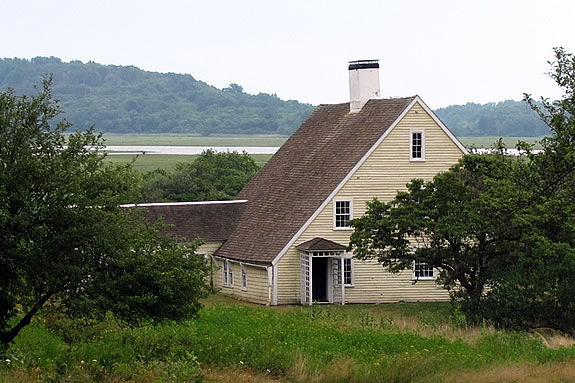 |
Jeffery’s Neck Ipswich, Mass | 1694 | Greenwood Farm is open for tours |
Greenwood Farm – an historic property and nature reserve located in Ipswich, Massachusetts, is owned by The Trustees of Reservations and features the Paine House, a First Period farmhouse constructed in 1694 by Robert Payne Jr. The Paine House is an integral lean-to, with the rear room and sloping saltbox roof part of the original construction.
In 1640, William PAYNE‘s son Robert Paine Sr. arrived in America and received a grant of land along the salt marshes at Jeffrey’s Neck, near Ipswich, Mass. He was one of six siblings who immigrated to America.
In 1642, Richard Smith arrived in America and obtained farm land adjacent to that of Robert Paine. In 1694, Robert Paine Jr. had a salt-box style house constructed on his property, not far from the Ipswich River. Robert was foreman of the Grand Jury that returned the Salem Witch Trial indictments. For his story, see his grandfather William PAYNE’s page.
In 1702, Daniel Smith, grandson of Richard Smith, and son of Richard Smith II married his neighbor, Elizabeth Paine, granddaughter of Robert Paine, and daughter of Robert Paine Jr. Partly as a dower, and partly in consideration of Daniel’s promise to provide lifelong care for Robert Paine ‘Jr.s infirm son (John Paine), Robert deeded the salt-box house and much of the Paine farmland to Daniel Smith, effective in 1703. Ownership of the Paine house thereby passed to the Smith family, and the deeded land expanded the land the Smiths already owned. Elizabeth Paine died in 1717. In 1722 Daniel Smith married Deborah Willcomb.
The Smith land and the land and house that had once belonged to the Paines remained in the possession of the Smith/Willcomb descendants for five generations.
Click here for Google Map of Greenwood Farm
The property includes several islands on the salt marsh, the three largest being Diamond Stage, Homestead, and Widow’s Island. The islands are drumlins created by the Wisconsin glacier more than 10,000 years ago. Access to the islands is prohibited to protect the salt marsh.
The channels through the marsh lead to the Ipswich River, which begins its journey to the sea 35 miles west in Burlington. In this area, flooded twice daily by the tides, blue mussels (Mytilus edulis) attach to rocks and soft-shelled clams (Mya arenaria) burrow in the mudflats. At low tide, green crabs (Carcinus maenus) e
For more info on how to visit Click here for the Greenwood Farm Site


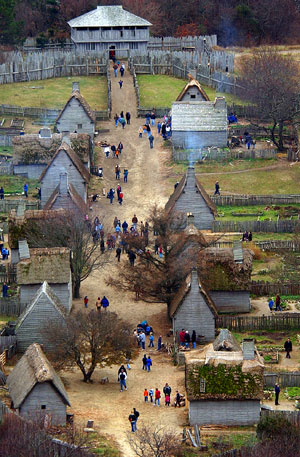











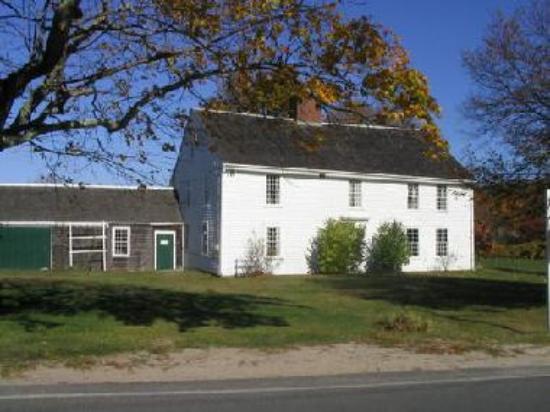



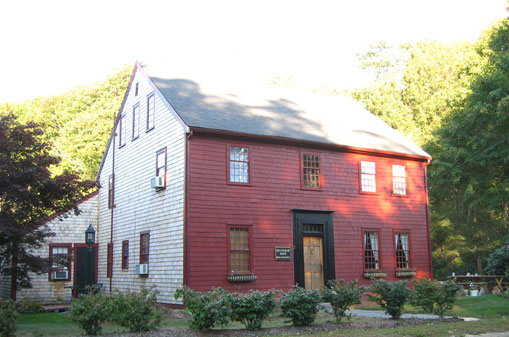
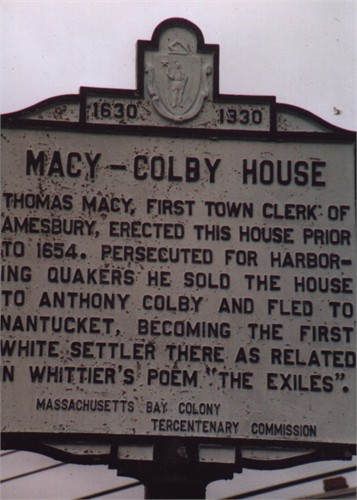


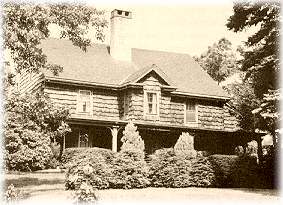


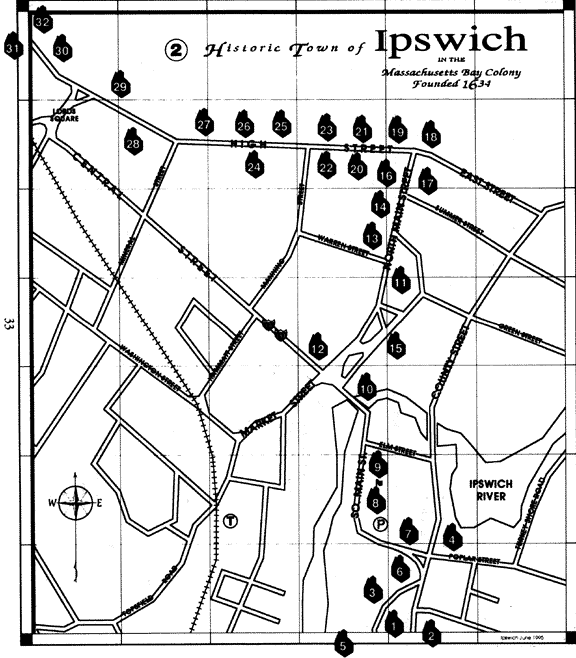











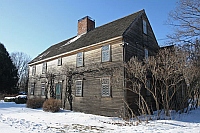










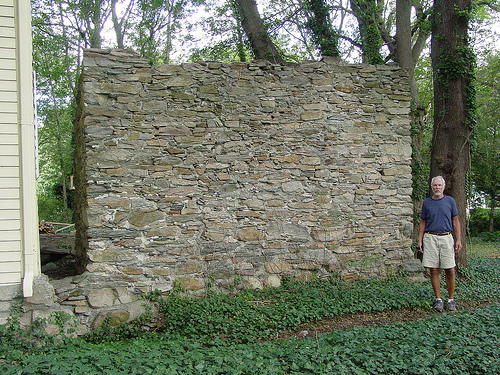




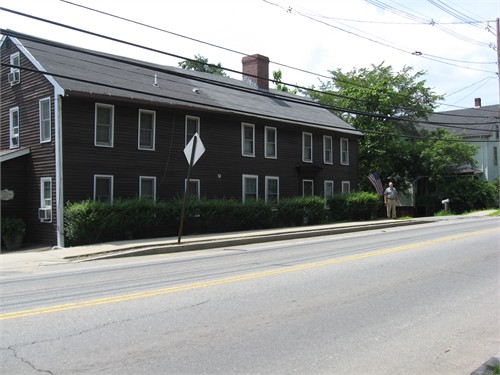
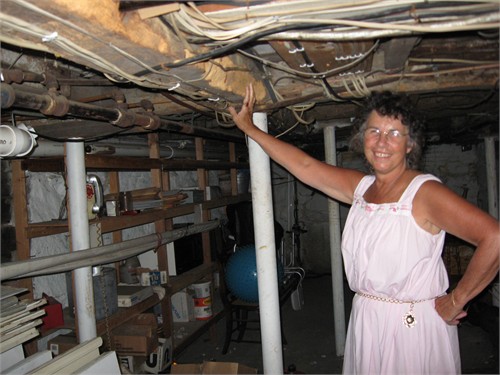











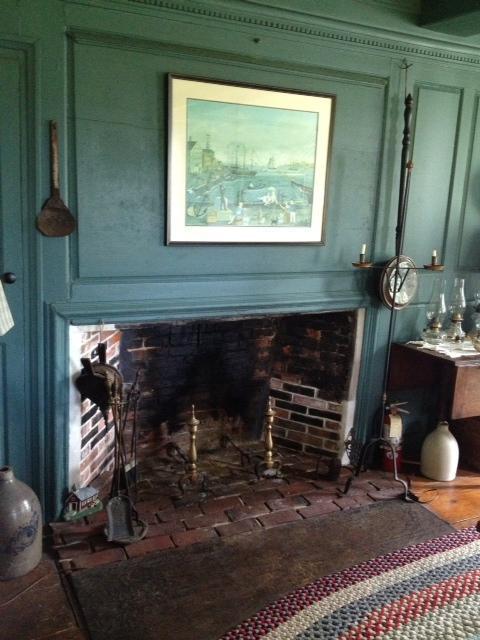





Okay, Shall I understand this informations that this is the true story of the Ancestors , Descendants or relative to for example Elizabeth Harvey nee Blyford of Norwich, Norfolk in England and my allready op-dated Grace Harvey on my ” Johansen Famiy Tree ” under my full name : Magnus Torstein Jogvanson Johansen on this Link URL : http://www.myheritage.dk/site-126669071/johansen NB.!!! It is maybe necessary to set op com instead dk for the Link to few open the Link. In that case ,please reply. Yours sincerely. Mr. Magnus T.J.Johansen from the Faroese village Ejde in Faroe Islands (Faroes) Faroer Inseln. Who is under the Danish Kingdom.
Ok, a litle bit more. Sorry maybe I missunderstood you. This is perferably the Ancestors of John Peters and Elizabeth Gibbon instead . It that true.???. Yours sincerely. Mr. Magnus from the Faroese village Ejde in Faroes.
Pingback: Favorite Posts 2011 | Miner Descent
Great website! I was always under the impression that massive chimneys were built INSIDE of early homes, in part to keep warmth from the heated bricks inside. Interesting to see that the stone houses shown here have their chimneys built on the OUTSIDE end of the buildings. Was this an American/colonial innovation?
Exterior chimneys have a precedent in the South and West of England. The Southern Colonies in the 17th and early 18th centuries established the American style for this, which became distinctively Southern.
Exterior chimneys were probably common early on, often made of wood. The ‘stonender’ chimney was common only in the Rhode Island/far-southeastern Connecticut. Interior end chimneys were very common in eastern Massachusetts, but with few exceptions they have not survived in that configuration, due to later additions which rendered center chimney houses.
Pingback: Favorite Posts 2012 | Miner Descent
Pingback: William Payne | Miner Descent
Amazing! I have always loved homes in Connecticut and in other New England states. Stephen Hopkins 10th GGF. and Emanuel Downing, 8th GGF. and the Tabor home..Thanks again for sharing your work.
Pingback: Favorite Posts 2013 | Miner Descent
My name is John Prescott Chaplin: 15 Generations William to \James Prescott Chaplin 5th – William Chaplin 1 (1515-08/27/1603), Jeremiah Chaplin 2 (08/04/1541-12/17/1590), Ebenezer Chaplin 3 (05/10/1572-d. unk.), Hugh Chaplin 4 (05/22/1603-01/22/1654), Joseph Chaplin 5 (12/11/1646-04/17/1705), Jeremiah Chaplin 2nd 6 (07/27/1680-12/17/1763), Jonathan Chaplin 7 (02/16/1706-7-06/01/1794), — Rev. Daniel Chaplin 8 (03/27/1782-10/14/1828) Married Susanna PRESCOTT 10/09/1757-09/31/1832 the daughter of Judger James Prescott brother to General William Prescott. — James Prescott Chaplin MD 9 (03/27/1782-10/14/1828), Daniel Arthur CHAPLIN MD, 10 (1821-08/(10/10/1896-05/20/1968). 04/1886), John Dorr Hayward CHAPLIN 11 (11/06/1861-12/10/1937), James Prescott Chaplin 12 (10/10/1896-05/20/1968). JOHN PRECOTT CHAPLIN 13 Olympic Track Coach (b. 04/09/1937), Mathew Ryan CHAPLIN Lawyer 14 (b. 05/31/1973), James Prescott CHAPLIN 5th 15 (b. 04/17/2013). He is the last male in the line from Daniel Chaplin and Susanna Prescott.
If you want complete information on William Chaplin let me know.
thank you for all this info! We are just beginners with genealogy and I’ve learned we share common ancestors to Jeremiah Chaplin 2nd. (My mother was a “Chaplin”).
Yes, we would like more complete information on William Chaplin.
My email is linda-o@audioeditons.com
I have chart from William Chaplin to James Prescott Chaplin 5th and if you go to Chaplin/html you will find a history of the Chaplin’s. My e-mail is jpchaplin@hughes.net
Jeremiah Chaplin son Jonathan is my ancester.
John P. Chaplin
The information on the houses is of poor quality. The dates of construction are absurd; the Goodale house in Ipswuch , for example, is no earlier than 1690, and probably more like 1705 or so, based on style.
Ignore nfl123. Based on the same rude, condescending tone he has used on other sites, he is probably the same person who has been vandalizing pages on Wikipedia without providing reliable sources and deleted this website as a reference for information about the Goodale House, replacing it with his own misinterpretations. The fact that he can’t spell Ipswich, for example, indicates that he cares little about details or accuracy.
There are two ways to date a house, by tree-ring or style. I see that some of the dates of construction have been corrected, based on my or some other reliable source. The majority of the dates are still based on secondary sources, and should be taken with a grain of salt.
I want to compliment you on your well-organized website, and espeically on this sub-section which details and portrays the 17th century houses connected to your family. I also like the way you have summarized each of the 14 generations from 1st to 14th with maps of their places of origin. i teach a class at Washington college in Chestertown Maryland on “Family History and Genealogical Research” and I am going to recommend to my students that they all visit your website as a model of how you can organize and summarize your research results One of the things I have been urging my students to do is to develop the social history surrounding their ancestors, and you have done this in very informative ways. Best wishes! Warren S. Beaven — Chestertown, Maryland. .
From Tre McCarthy
tremccarthy@gmail.com
Hey! My name is Tre McCarthy, and I am the current owner of the Chaplin Clarke House in Rowley, MA. I got a TON of info on my home, and the people that lived there over the years, from this site, and figured I would let you know that the houes is currently on the market, in case that was of interest to you! https://www.windhillrealty.com/listing/72137401/121-haverhill-street-rowley-ma/
Cole/Downing/ Proctor House and the property. My 7x great grandfathers – John Downing, son of Emanuel Downing and Daniel Cole, son of Robert Cole. John and Daniel were born in same house. John’s son, George Downing married Mary Cole, daughter of Daniel Cole. George and Mary settled in Oyster Bay, Long Island. 🙂
I together with my buddies ended up following the great information and facts from
your web site and then all of the sudden came up with a horrible suspicion I had not expressed
respect to you for those strategies. All of the ladies were
as a result passionate to learn them and have in effect unquestionably
been enjoying these things. Appreciate your getting simply accommodating and also
for using this kind of brilliant subject areas millions of individuals are really eager to know about.
My personal honest regret for not expressing gratitude to earlier.
Thank you for taking a moment to say thanks, I am glad it was helpful. We are all cousins.